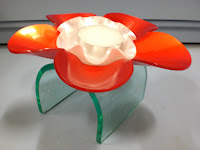Mycpf government portal is a good example of personalization. As a government service provider of CPF related information, the user like me has little control over how I want to format or how I want information to be processed. After logging in using my Singpass, I am greeted with the page which offers me choices of information I want to retrieve. If I want to check my statement, I would click on the thread, ‘Statement’. This will bring me to the details of my balances in Ordinary Account, Special Account and Retirement Account. However I find that the navigation is rather restricted as I cannot select which account I would like to appear when launched after keying in my Singpass. This is different from the website of banks eg. DBS which is customized to the preferences of customers. In fact I can even choose what colour interface I would prefer when the web page is launched.
Another point of restriction is that the customer survey on satisfaction always pops up when logging out even if you dislike it. On the whole this website has undergone tremendous improvement with many applications eg. Calculators on future savings and retirement amounts for financial planning. It is moving towards customization in small ways. Hopefully it can strike a good balance between customization and personalization to enhance flexibility in servicing customers.
Another point of restriction is that the customer survey on satisfaction always pops up when logging out even if you dislike it. On the whole this website has undergone tremendous improvement with many applications eg. Calculators on future savings and retirement amounts for financial planning. It is moving towards customization in small ways. Hopefully it can strike a good balance between customization and personalization to enhance flexibility in servicing customers.













